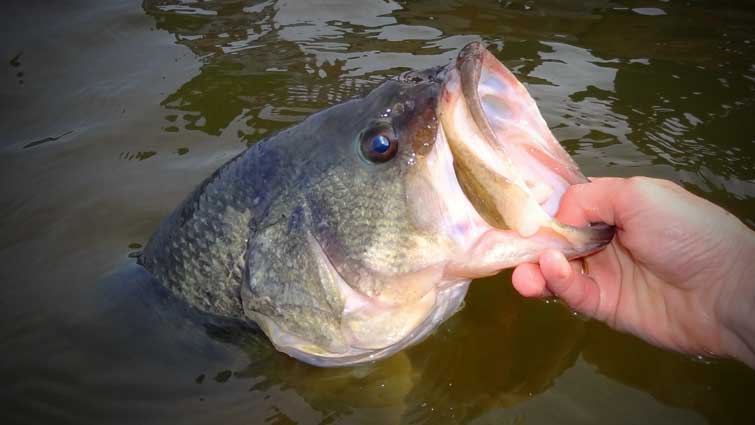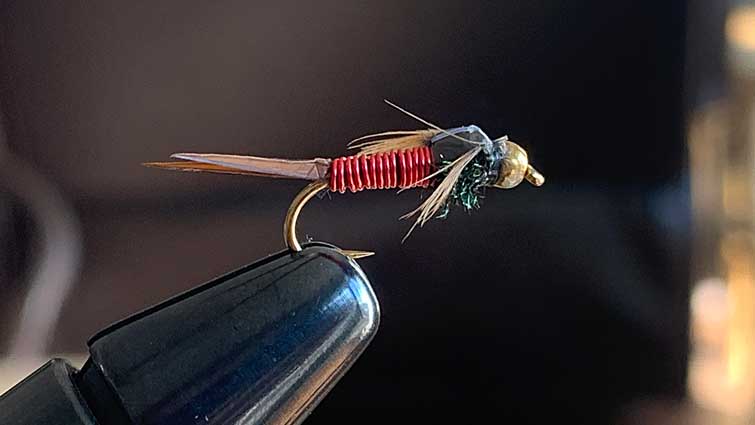Wet fly fishing is also referred to as subsurface fishing because it involves using sinking lines. When fishing with wet flies, anglers attach a weighted fly to their line, which sinks into the feeding zone of the river or stream.
To fish traditional Wet flies, you'll frequently cast across and downstream, then allow the line to swing across the current before being tugged back upstream. Strikes are generally felt rather than seen because the line is kept tight.

There isn't just one effective approach when you're choosing a specific type of hook size; instead, several factors come into play while you're trying your best at reeling in that prized trophy on the end of your line! Read ahead for the basics of freshwater fly fishing, and I'll show you how to fish wet flies using a traditional method.
What is Traditional Wet Fly Fishing?
To exist, trout require food, which they are eager for. They have keen eyesight underwater – particularly where there is food. The wet fly takes advantage of these characteristics.
A Wet Fly is a long-standing fly fishing pattern that dates back to the birth of fly fishing. The wet fly is frequently fished underwater with a deliberate motion due to current or the angler. In basic terms, wet fly fishing is an attempt to replicate subterranean insect activity.

The traditional approach entails using several flies. Anglers once fished a half-dozen or more flies on occasion. There are various ways to execute a two or three fly rig, including:
- The dropper fly connects to the point fly's hook bend.
- The dropper fly connects to a tag end of the leader ahead of the point fly.
- The dropper fly is linked to the eye of the point fly's tippet section.
The most frequent approach for beginning anglers to utilize the two-fly technique is to attach a dropper to the bend of the hook of the point fly. Many people are afraid to use multiple flies because it seems intimidating, but the benefits greatly outweigh the risk of tangle perdition.
There are also many benefits to wet fly fishing, including:
- Wet flies are a great way to cover more water.
- They're easier to cast than a weighted nymph or streamer rig, and they're an excellent choice for when you don't want to watch the strike indicator float down the river.
- Because the rigging is so straightforward, it's simple to swap from wet flies to dry flies without having to rerig completely.
- They're also helpful in a wide range of water conditions, and they are effective in nearly any location, as long as they're fished at the correct periods.
Wet flies take the guesswork out of fly selection for trout by removing the need to match each insect they encounter.

How to Perform the Wet Fly Swing
Once rigging is taken care of, we'll move on to some fishing techniques like the famous "wet fly swing." The wet fly swing is used to quickly and effectively bring the fly down deep and swing it in front of the target fish. When trout are holding deep but not rising for any particular hatch, this technique is used by trout anglers.
To perform the wet fly swing:
- The angler must first find an excellent deep run with slow currents.
- The technique is best performed on head-high, low-gradient water so that the fly can be swung across it in an arc to cover as much area as possible.
- Cast the fly slightly upstream and across
- Follow the line through its drift with the rod tip
- When you think the fly is close to where a fish should be, stop moving the rod tip or lift it slightly.

Tips and Tricks for Wet Fly Fishing
Some of the best tips and tricks for wet fly fishing include
- Consider re-tying your leader material when it starts to get sloppy.
- Remove the fly from the water in a fast, fluid motion.
- It's all about the weight. Wet-fly anglers rarely use split shot, but it's a significant success factor and enables you to cover water that would be off-limits to wet-fly fishermen.

There are several different techniques for fishing traditional wet flies. Some technical tips include:
- The fly should be cast across and downstream of the area you're trying to fish, then swung into the current like a pendulum until it swings back into your casting position.
- Pulling out line as fast as possible is usually best when bringing in the line after every few casts; this also keeps too much weight off your leader material, which can lead to sloppy presentations if not re-tied often enough.
- When pulling up all of your slack (without resting), make sure that you do so with an upward motion instead of downward - this ensures a quick, fluid movement without any pauses or slowdowns.

How Do You Fish a Wet Fly?
Wet flies are meant to be presented to fish that are submerged below the surface of the water. Wet fly patterns frequently include a weighted component to aid in the sinking of the fly in the water column. It's easy for a predator to spot any movement in the water, especially if it's moving.
To fish a wet fly, remember: when you cast your bait slightly ahead and downstream, it has an opportunity to sink before swinging around and rising with the tightening line, much as a natural rises to the surface before hatching. It's on this rise that fish usually strike.
There are two main ways to fish wet flies. The first is the traditional method, which involves wading into a river or stream with your fly rod in hand and throwing them upstream towards you. This technique imitates an emerging insect that has just broken through the surface film upon hatching—and they usually do this at dawn or dusk when fishing pressure is lowest.
Can You Fish Wet Flies on a Floating Line?
A floating line with no split shot may suffice if the fish are biting on your streamer or wet fly if you're in shallow water. To that end, adjust the sink tip weight to match the current speed—obviously using a heavier grain for faster current and bigger water.
You can fish wet flies effectively on a floating line with no weight. When the fly hits the water, it will sink momentarily as its hackle sags and rise as the trout takes it in. In this way, your fly imitates an emerging insect or baitfish trying to escape from underneath the surface film by swimming up towards safety.
What Kind of Line Do You Use for Wet Flies?
There are quite a few lines that can be considered when traditional wet fly fishing. Various methods are used when fishing wet flies and the line required will depend on what you're doing. As a general rule: If your fly is floating (or very nearly so), use a clear or lightly-tinted monofilament leader with an appropriate tippet size for the conditions at hand.
There are two primary types of fly lines required for wet fly fishing. The two most popular varieties are a dry line and an intermediate line, also known as a slime line or clear camo. Choose your line depending on how deep you want to go with your flies.

What is Wet Line Fly Fishing?
The technique for wet fly fishing is quite distinct from both nymph and dry fly techniques. With traditional wet flies, you cast them out ahead of the boat or across to the far bank—usually by using an upstream presentation—and then allow them to sink down in still water until they are just under the surface before starting a slow retrieve.
During this process, your line will periodically sit on top of the water as its hackle sags and rise as the trout takes it in. In this way, your fly imitates an emerging insect or baitfish trying to escape from underneath the surface film by swimming up towards safety—and often, they do so just at dawn or dusk.

Wet fly fishing can be a rewarding approach, but it isn't always the simplest to master. When fishing a traditional wet fly, it's essential to maintain contact with the fly at all times; you must not let go of your line or allow slack for a fish to take your fly! Many anglers believe that traditional wet flies are best fished dead drift downstream, but this is incorrect.
Wet Fly Fishing is not only fun but can be one of the most rewarding types of fishing when done right. I hope that through my guide, you'll learn exactly what it takes to begin your journey into successfully mastering these incredible techniques, which aren't as tricky as they might seem at first sight.

About the Author
Matthew Bernhardt, a third-generation Coloradan, grew up at the forefront of the state’s fly-fishing revolution, enjoying time on the water, side by side with experienced guides and lifelong anglers.
By combining his passion for fly-fishing with input from other experienced fly-fishers and guides and his fine arts degree from Colorado State University, Matthew spent five years carefully developing the Drifthook Fly Fishing System, built to help every angler catch more trout.
When he’s not spending time with his wonderful family, you’ll find him out on the water catching MONSTER trout, and he anxiously looks forward to the day when his kids are old enough to join him there.



